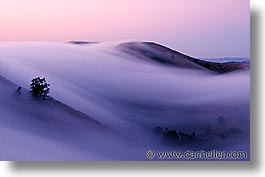|
This is, perhaps, the worst possible question a student can ask, and conversely, it's the most irresponsible one a teacher can answer. This dispels the old saying that "there is no such thing as a stupid question." There definitely is such a thing, but it's not because the student should know the answer to it; it's because the student is looking for the quick solution to an otherwise trickier problem, and the teacher is doing a disservice by answering that question. If you peel away the "technical" aspects to photography, the real meat of the craft can only be learned through exhaustive, repetitive experimentation. Most photo "teachers" tell their students early on to find the unique view that no one else has seen. But people unfamiliar with photography have yet to develop artistic fundamentals, to understand and appreciate the nuanced differences of various artistic styles and how to build upon them in order to ultimately come up with uniqueness. Indeed, this is how creativity is learned in other fields in the arts. Musicians learn their craft by playing music written by others, painters learn by emulating the masters, and authors learn by reading and emulating the works of other writers. The process of copying others' works is a series of experiments, and it's the combination of attempts and failures in emulating others that helps you develop your own style and unique vision. But what about that "technique" thing? Sure, you need to understand the basic physics involved—shutter speed, aperture, ISO settings—but those are very simple concepts (no, really!) and while you need to learn them eventually, don't regard them as barriers to creative learning. In fact, when attempting to emulate other photos, it's the very process of experimentation and eventually "landing" on the final outcome that helps you evolve as a photographer. Yes, it takes time and deliberation. But that's what you sign up for in the creative arts. There is no shortcut to improving artistic skill. Below is a series of tutorials that cover various photography techniques, but as you may understand now, I am not a "paint by the numbers" sort of teacher. I give instruction on methods that can be applied using the most basic fundamentals of photography. I do not teach fundamentals; you should already know how to push the button and basic functions of your camera. Topics and Essays
Click to recommend this page: |
|
